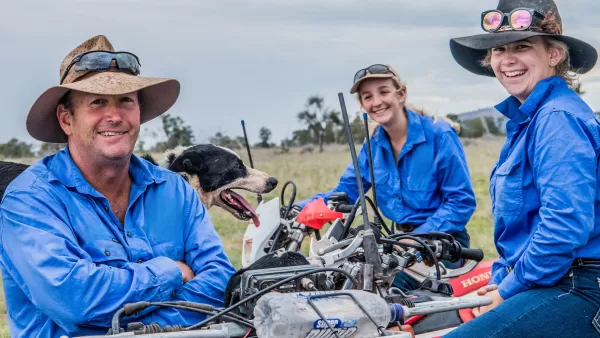Bundaberg Sugar Cane & Macadamia Nut Farm
Energy Savings: 26% | Cost Savings: $8,829 | Capital Cost: $41,939 | CO2 Savings: 13.1 | Project Status: implemented
Industry:
Sugarcane
Location:
Wide Bay Burnett
Pump Type:
Centrifugal
Irrigation Type:
Flood, Travelling gun
Technology:
Irrigation and Pumps, Solar Power and Renewables
A sugar cane and future macadamia farming enterprise located in Bundaberg could benefit from a recent Energy Savers Audit. Farming requires constant decision-making to maximise production and profit. Often irrigation systems are out of date and are in need of replacement to incorporate new technologies and updated knowledge.
The total area of cropping lands consists of 82 ha and is divided into three sectors that are serviced by four pumps, whit only three being included in this proposal. The current pumping systems service two sections of the farm through interconnecting underground mainline. These sections are mostly utilised for sugarcane production while an area to the north of the sugarcane fields is being developed as a macadamia nut orchard.
Pump site one services 35 ha of sugarcane with travelling gun and gravity feed furrow methods. While the incoming pressure is adequate to irrigate much of this area through gravity feed furrow irrigation, when supplying the travelling gun, a pressure management gate valve is used on the distribution side of the pump to enable the restricted operation to maintain pressure. Pump two is only used occasionally to support the main irrigation system and to irrigate the developing macadamia nut orchard. The site has historically been connected to tariff 66 which includes a fixed monthly charge based on motor size and when use is limited this charge can present a significant portion of the account. Finally, pump three services 20 ha of sugarcane with low-pressure hand shift sprinklers and trickle irrigation. It has a low capacity motor that draws an average of 10 kW/hr delivering irrigation at 115 kWh per ML of water pumped. None of the pumps is currently connected to tariff 33.
Energy consumption from the site of the pump showed that a total 61,387kWh at a cost of $21,228 was used during the 2018-2019 period. A recent energy audit showed how improving the current systems can lead to energy and cost savings. The recommendations explored in the audit included:
- The replacement of 37kW pump, motor, and installation of Variable Frequency Drive (VFD) at pump one. Energy demand will decline as the VFD will manage factors related to incoming water delivery pressure fluctuation, providing the potential for sustainability of current levels of high productivity.
- Installation of a 30kW Solar PV at pump one to reduce grid energy demand for pumping.
- Conversion to Tariff 33 at all pumps.
Table 1. Energy savings from audit recommendations
| Recommendations | Annual Energy Savings (kWh) | Annual Cost Savings ($) | Emission Savings (tCO2-e) | Capital Cost ($) | Payback Period (years) |
| Pump upgrade and install VFD | 17,950 | 5,645 | 14.5 | 16,018 | 2.8 |
| Solar Pump | 16,160 | 8,829 | 13.1 | 41,939 | 4.8 |
| Change to Tariff 33 | – | 6,410 | – | 7,500 | 1.1 |
| Total | 34,110 | 20,884 | 27.6 | 65,457 | 3.0 |
With all pumps connected to Tariff 33 and water use similar to that required for the 2019 crop, operating cost at pump one when combined with pumps two ($962) and three ($2,348) will result in an annual cost of $4,560. This will lower the annual estimated cost of irrigation for each tonne of cane produced to $0.56/tc.
The farmer proceeded with the implementation of the 30 kW solar PV system, with potential energy consumption savings of 26%, costs savings of 32%, and carbon emission savings of 13.1 tCO2-e per year. Actual savings will be updated once the measurement and verification process is complete.
Table 2. Pre and post audit energy consumption, costs, and energy productivity savings
| Metric | Pre-Audit | Post-Audit | Reduction (%) |
| Energy Consumption (kWh) | 61,387 | 45,277 | 26 |
| Cost ($) | 21,228 | 12,399 | 32 |
| Energy Productivity (kWh/ha) | 749 | 552 | 26 |
An energy audit is a good investment
An energy audit is a great first step in moving a business towards a more efficient future by reducing energy use, costs, and carbon emissions on site.
The Energy Savers Plus Extension Program was delivered by the Queensland Farmers' Federation with support and funding from the Queensland Department of Energy and Public Works.

